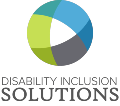Universal design (UD) is an important concept that is often misunderstood. Today, I’m setting the record straight about universal design myths so I can help you reach your inclusion goals! Let’s explore 6 common misconceptions about UD in the built environment.
Universal Design Myth #1: Universal design is only for people with disabilities.
Truth: While universal design does benefit people with disabilities, it’s really just a thoughtful design to create spaces that are accessible and usable for people of all ages, sizes, and abilities.
Myth #2: Universal design means compromising on aesthetics.
Truth: Universal design does not mean sacrificing style or aesthetics. Experienced designers recognize that looks often influence usability and enhance the overall design of a space by creating a more cohesive and functional environment.
Myth #3: I don’t need universal design because I don’t have a disability.
Truth: Universal design makes life easier and more inclusive for everyone now and in the future. When you’re young, fit, and healthy, it’s easy to overlook how well the environment accommodates your needs. But climbing stairs or turning doorknobs becomes more challenging as you age. Poor ergonomics can gradually harm your body. So, why not do something about it now?
Myth #4: Universal design is too expensive.
Truth: Many UD elements cost the same as standard design elements. Most even increase the value of your property by retaining its usefulness for a longer period. In the long run, universal design saves money by addressing customer requirements early rather than retrofitting a space after the fact at a higher cost.
Myth #5: Universal design only works if you have a lot of square footage.
Truth: A universal design environment does not require extra space. A well-designed space will provide greater accessibility, comfort, and convenience, even if it’s small.
Myth #6: Building codes & local regulations already address accessibility.
Truth: Building codes don’t fully address inclusivity, as they typically focus on minimum requirements for physical mobility. Universal design considers how people interact with a facility as a whole, from zero-entry entrances to display materials that are simpler and more intuitive to understand.
Universal design is essential to creating accessible and usable spaces for people of all ages, sizes, and abilities. By debunking common universal design myths and understanding the truths behind UD, we can create more functional and inclusive spaces that benefit everyone.
Reach out to my team and me if you are ready to add universal design to your DEI strategy. We can help you implement universal design principles to create an environment that is accessible, comfortable, and welcoming for all.





0 Comments